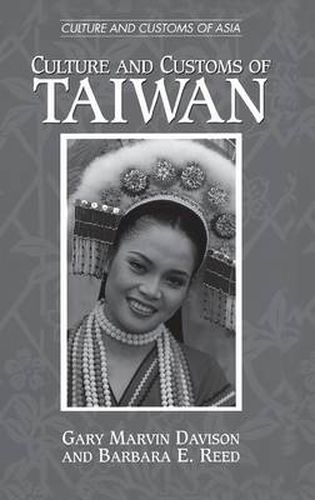Readings Newsletter
Become a Readings Member to make your shopping experience even easier.
Sign in or sign up for free!
You’re not far away from qualifying for FREE standard shipping within Australia
You’ve qualified for FREE standard shipping within Australia
The cart is loading…






Taiwanese society is in the midst of an immense, exciting effort to define itself, seeking to erect a contemporary identity upon the foundation of a high distinctive history. This book provides a thorough overview of Taiwanese cultural life. The introdction familiarizes students and interested readers with the island’s key geographical and demographic features, and provides a chronological summary of Taiwanese history. In the following chapters, Davison and Reed reveal the uniqueness of Taiwan, and do not present it simply as the laboratory of traditional Chinese culture that some anthropologists of the 1950s through the 1970s sought when mainland Chinas was not accessible. The authors examine ow religious devotion in Taiwan is different from China in that the selected deities are those most relevant to the needs of the Taiwanese people. Literature and art, particularly of the 20th century, reflect the Taiwanese quest for identity more than the grand Chinese tradition. The Taiwanese architecfture, festivals and leisure activities, music and dance, cusine and fashion, are also highlighted topics. The final chapter presents the most recent information regarding children and education, and explores the importance of the Taiwanese family in the context of meaningful relationships relationships amongst acquaintances, friends and institutions that make up the social universe of the Taiwanese. This text is a lively treatment of one of the world’s most dynamic societies.
$9.00 standard shipping within Australia
FREE standard shipping within Australia for orders over $100.00
Express & International shipping calculated at checkout
Taiwanese society is in the midst of an immense, exciting effort to define itself, seeking to erect a contemporary identity upon the foundation of a high distinctive history. This book provides a thorough overview of Taiwanese cultural life. The introdction familiarizes students and interested readers with the island’s key geographical and demographic features, and provides a chronological summary of Taiwanese history. In the following chapters, Davison and Reed reveal the uniqueness of Taiwan, and do not present it simply as the laboratory of traditional Chinese culture that some anthropologists of the 1950s through the 1970s sought when mainland Chinas was not accessible. The authors examine ow religious devotion in Taiwan is different from China in that the selected deities are those most relevant to the needs of the Taiwanese people. Literature and art, particularly of the 20th century, reflect the Taiwanese quest for identity more than the grand Chinese tradition. The Taiwanese architecfture, festivals and leisure activities, music and dance, cusine and fashion, are also highlighted topics. The final chapter presents the most recent information regarding children and education, and explores the importance of the Taiwanese family in the context of meaningful relationships relationships amongst acquaintances, friends and institutions that make up the social universe of the Taiwanese. This text is a lively treatment of one of the world’s most dynamic societies.